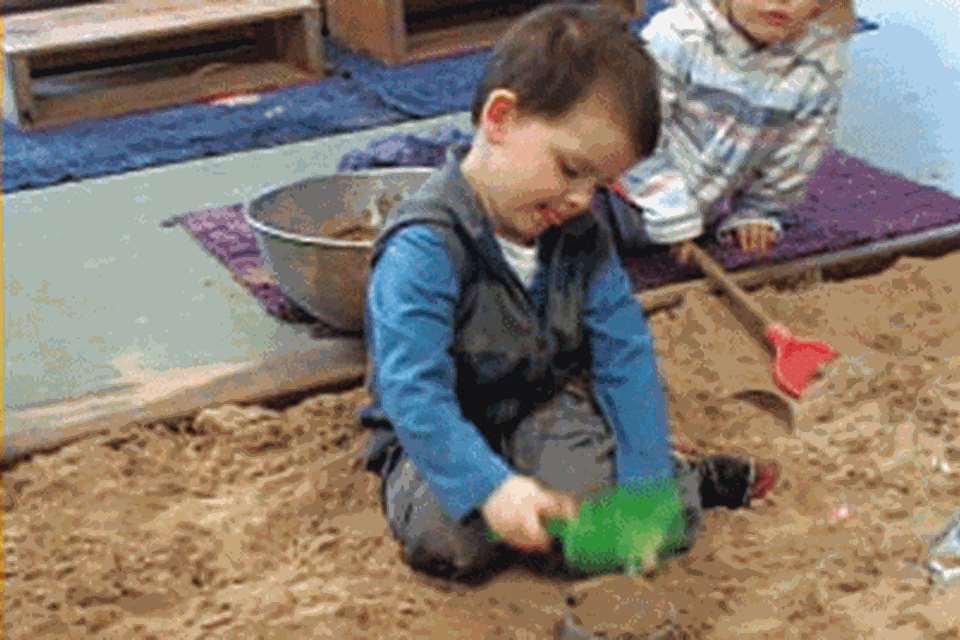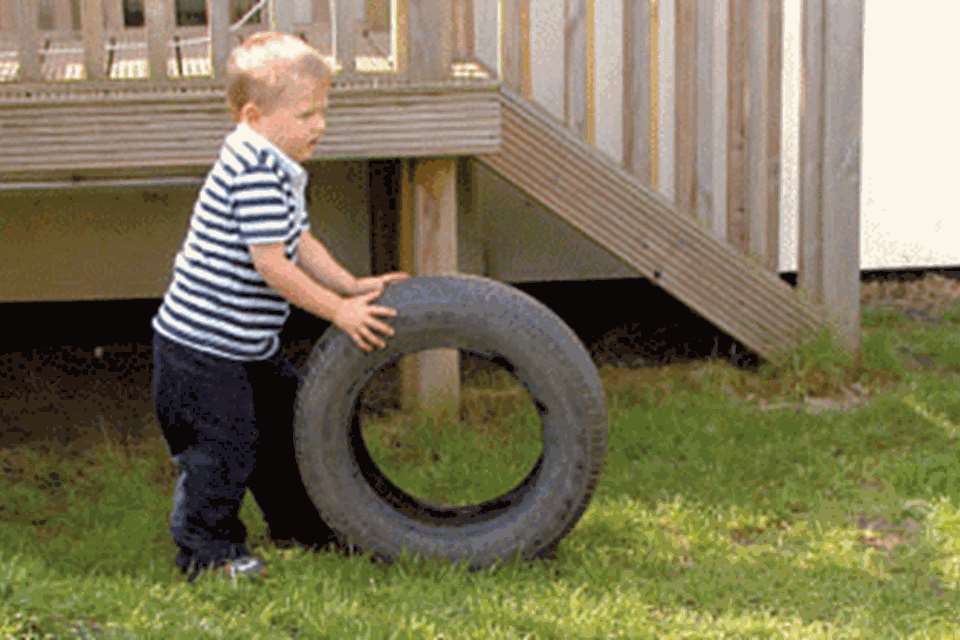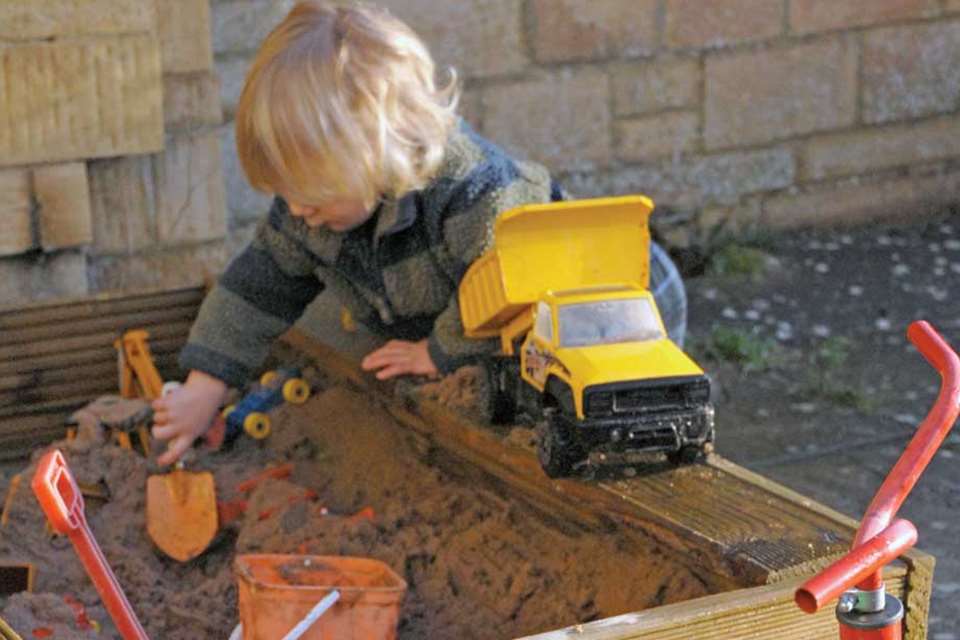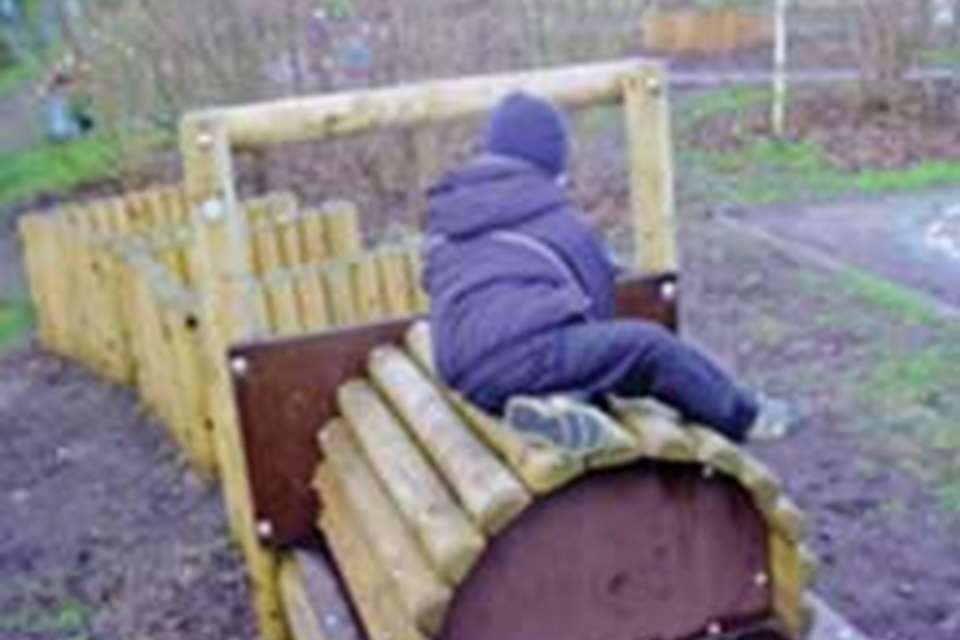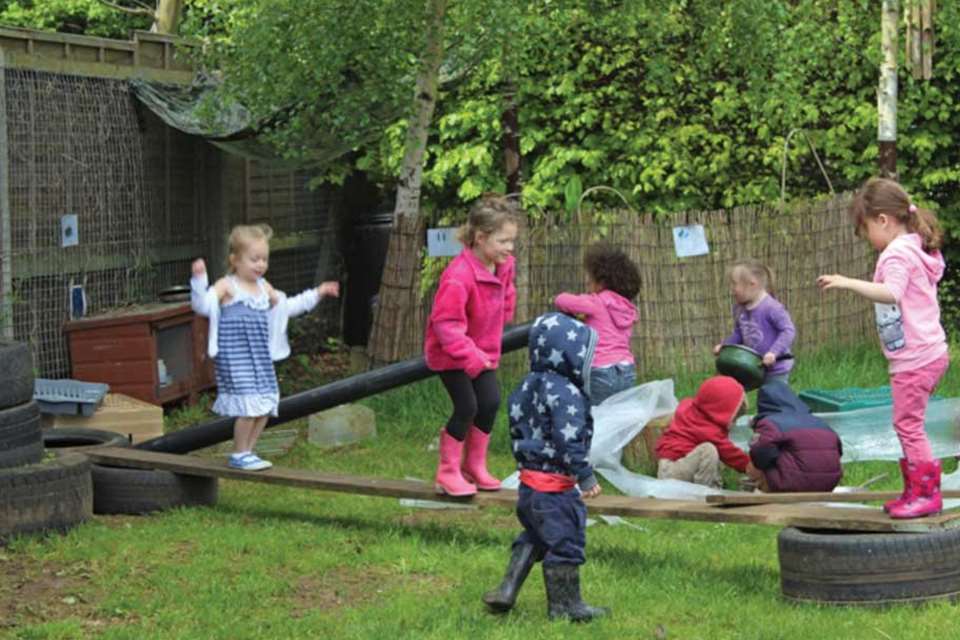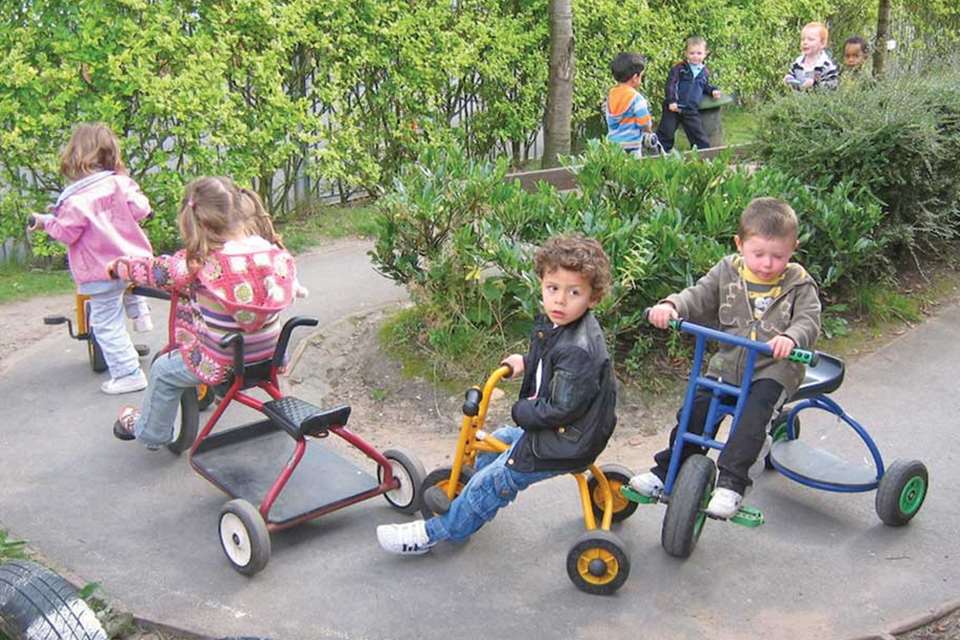Enabling Environments: Collections - Carry on
Nicole Weinstein
Monday, November 17, 2014
The transportation schema allows practitioners to witness the advance of learning. Nicole Weinstein shares her advice on supporting it.

Young children love to push trolleys and wheelbarrows and to move around natural materials like sand, water and stones by hand.
Providing a wide range of equipment that allows them to gather and transport materials to different areas of the nursery will not only help satisfy the two common schemas -transporting and assembly - but will also help develop children's understanding of quantity, capacity, number and distance.
Early years consultant and author of Understanding Schemas in Young Children - Again! Again! Stella Louis says, 'The transporting schema is such an important schema: one that needs thoughtful resourcing coupled with supportive practitioners who understand a child's need to freely move around and mix together natural materials and take on board themes that will stimulate all their senses.'
TRANSPORTATION SCHEMA
The transportation schema is about movement - of the mind and body, which are inseparable. Whatever a child does schematically they do twice, which means they need the physical opportunity to move - not just themselves but other things too.
Ms Louis explains, 'Although you see children that are mobile transporting things from one place to another, you also see the process of learning taking place. For example, over a term you might see children moving papers and random bits from one place to another. And then you notice all of a sudden they are being quite selective about what they move. They may just move things associated with a role - being a postman or a dustbin man. What this ultimately captures is the process of play.'
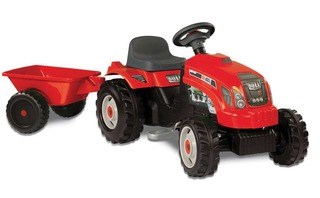
Schemas operate on four stages, all of which are reflected in their schematic activity.
The first stage is the sensory movement development stage, so a child with the transporting schema might just move themselves or their play things from one place to another.
The second stage is the pretend play stage, where a child with the transporting schema will happily push around an empty buggy. At first, they don't understand that they need a baby in the buggy, but as the play develops they might put a baby in the buggy and pretend to go to the park.
The third stage is cause and effect. This is where a child will deliberately put a baby in buggy and say something like, 'I need some money; I'm going shopping.' All of a sudden you can see the progression and the extension.
The fourth stage is where the child will talk about the journey and where they have been with their baby and what they have been doing, and the chances are this will all involve transportation and movement.
But Ms Louis notes, 'The stages are not linear; they depend on children's experiences. If a child is constantly being told to stop moving things or to stop doing a particular action and they are not provided with an alternative, eventually that schema will disappear. Children need to develop deep groves in their brains for learning to take place. So it's not just about what to provide; it's also about knowing how best to support the child.'
RESOURCES FOR TRANSPORTATION 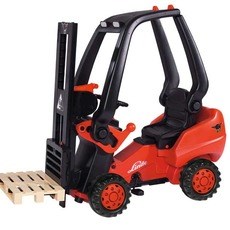
When thinking about resources, practitioners should be focusing on the sensory stage, which must incorporate all five senses, movement and the freedom of movement indoors and outdoors. Treasure baskets and heuristic play are good examples.
In the second stage, where there are two levels of pretend play, open-ended resources are needed. 'It is also helpful for staff to have an open attitude,' says Ms Louis. 'This will allow children to incubate their ideas because their ideas will not hatch overnight; they need time and practice and repetition.'
It is also important to ensure that there are enough resources for transporting – buggies, wheelbarrows, wheeled toys with spaces to carry passengers or materials, buckets, containers and pulleys.
Ms Louis adds, 'Often there are a lot of things to transport outside, but inside there are too many rules and restrictions and children can't move things. Children need the opportunity of that flow both indoors and outdoors - and a range of different materials that will give them different information, whether it's hard, soft, shiny or slippery, so that they can begin to develop their own theories about the materials and resources they are playing with.'
ASSEMBLING SCHEMA
When children are transporting they are moving things from one place to another: objects and their own bodies. When children are assembling, they are bringing things to just one place. A younger child might tip everything out of drawers and dump the contents in the middle of the room.
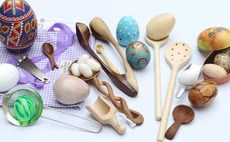
At a nursery setting, for example, a child might collect boxes from the creative area, with cups, saucers, blankets, books, dressing-up clothes and wooden blocks and put them in a pile on the carpet. Although it might look very similar to transporting it is different, and they will need different resources that they can move from one place to another. Because the two schemas are so intertwined, practitioners should think about resourcing for both.
Ms Louis says that it is about having the right resources and the right attitude. 'Children might want to move things from various different places and spaces. Lots of practitioners spend time picking things up after children have just dumped them in particular places - but they are actually interfering in their play.
'Schemas are a powerful learning mechanism. They are a useful tool that adults can use to develop children's thinking. If adults identify children's schemas, they can provide a wider and more appropriate range of resources and experiences which will better extend their play and learning.'
KEY RESOURCES
Here are some examples of resources to include in your collection of transporting equipment:
- One of the key places for transporting play is in role-play areas, especially in the home corner. Support this play with accessories for transporting dolls — buggies, carriers, car seats and a variety of bags and baskets. Try the 3 Wheel Stroller (£24.49), the Baby Car Seat (£15.95) or the Postie's Bag (£10.95), all from Cosy Direct on 01332 370152.
- Boxes and tins also make excellent resources for getting equipment from A to B. For smaller transportation, try the Solid Wooden Egg Cups (99p) from www.thechildmindingshop.co.uk, perfect for collecting and moving smaller items such as beads, buttons, pompoms, sequins and confetti. The Plain Cotton Shopping Bags (£1.52), Drawstring Bags (£1.34) and Toy Wire Shopping Baskets (£5.99), also from www.thechildmindingshop.co.uk, are useful for transporting items around the setting too.
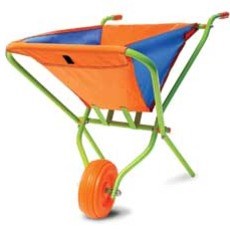
- Provide small lightweight bags and baskets to allow children to collect and transport items. Try the Set of 3 Baskets (£49.95), the pack of ten Collector Bags (£19.99), the set of nine Outdoor Trugs (£24.95) and the trio of Wooden Bowls (£39.95), all from www.tts-group.co.uk. The Pocket Tree (£31) is a fun way to store lightweight objects, while Nomad wall storage (from £88.90) contains a pack of three wall boards and six pockets that attach to the wall. Each pocket is easy to remove. Both from www.wesco-eshop.co.uk.
- Wheeled toys are a vital part of transporting play and fantastic for building up muscle strength and co-ordination skills. Provide a selection of fun wheeled toys that offer children the chance to move larger materials from place to place, including each other. Try the Children's Folding Wheelbarrow (£14.99), the Forklift Truck (£225) or the Red Tractor with Trailer (£77.95), all from Cosy. Or the Pedal Trike and Trailer (£234.95) from www.tts-group.co.uk and the Giant Dumper Lorry (£62) from www.wesco-eshop.co.uk.
- Children will need a range of materials to transport. Provide large and small resources in a variety of weights throughout the setting. Try the 30 Eco Building Logs (£79.95), the Oriental Black Stones 5kg (£5.95) and the Bucket of Gold Pebbles (£9.99) from Cosy.
- Children will love carrying items - and themselves - around in the robust, wooden Outdoor Cart (£139.95) and the Outdoor Block Cart (£199.95), both from www.tts-group.co.uk.
- Offer children containers of all shapes and sizes to transport things in and provide them throughout the setting inside and outside. Add mini baskets to small world with natural resources, bike baskets, larger bags and baskets outside for collecting leaves and other natural objects, buckets to sand, water and construction areas, bags and old handbags in the home corner and role play areas and boxes in the maths area. Try the Tiny Trug (£5.35), which is great for nature collections, the Jute Collector's Bags — 6 (£8.25), Bike Baskets (£14.99), the set of 10 Tiny Baskets (£3.95) or the Mini Builder's Bag (£3.99), all from Cosy.
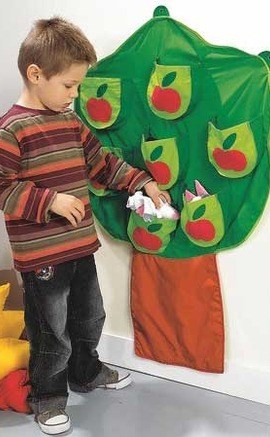
- The Treasure Basket Storage System (£219.95) from www.tts-group.co.uk contains six easy-to-remove natural baskets. The Egg and Spoon Collection (£60) from www.playtoz.co.uk is just one of the sensory collections available which has a strong focus on transporting. The Playscope Kaisa Treasure Basket (£55), also from www.playtoz.co.uk, contains 44 treasures for young children to explore using all their senses.
Explore transportation on a smaller scale by creating miniature building sites with plenty of mini moveable materials. Try sand, gravel, coffee grinds and small stones using the JCB 4 Vehicles Diecast (£24.99) and the Digger (£23.99), both from Cosy.
CASE STUDY: MAYTREE NURSERY SCHOOL AND CHILDREN'S CENTRE
Maytree Nursery School and Children's Centre in the London Borough of Lambeth is a free-flow nursery with a great outdoor space. Deputy headteacher Melanie Miah says, 'Children are supported in moving objects around the nursery - the equipment is clearly labelled so that resources are returned to the correct place for future use.
'The children will transport absolutely anything, often depending on where they are playing. They like to transport both large and small things - dolls, teddies, their own clothing, leaves, pine cones, conkers, sand, mud and other small resources that may be put out for another activity.
'For example, we put out some small ladybirds to count with, and within half an hour they had been scooped up into a plastic jar and moved all over the nursery.
'Water is also a particular favourite, especially outside. The children have free access to the water butts and they enjoy filling various containers, and bringing the water to the role-play area or the sand. When practitioners observe these things, they are very good at making further provision or moving resources to enable this exploration to continue.
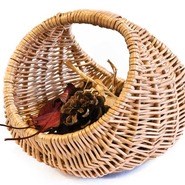
'We use lots of recycled materials such as pots, boxes, saucepans and jars. Children also love to use old paper bags. We allow the children to use pretty much anything that they find at school to transport things around. Wheeled objects are often the favourites.
'Staff comment on the schemas that they are observing and then add their comments to a "live" display board that we created. This enables the children to be fully supported in their play and exploration through their schema. Staff are also becoming better at taking time to observe, rather than jumping in with a question or comment. This has also supported the children in their development.'
MORE INFORMATION
Understanding Schemas in Young Children - Again! Again! by Stella Louis, Featherstone Education.


